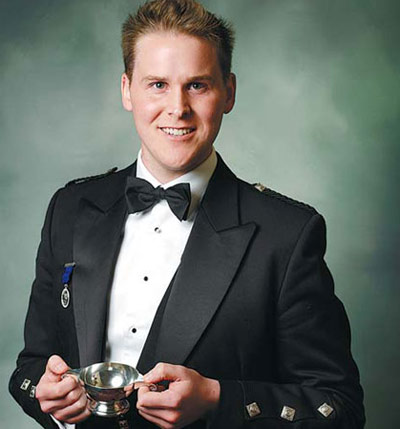Having a nose for whisky
 |
|
Steve Notman, managing director of Whisky Live Shanghai & Taipei. Provided to China Daily |
Whisky tasting can be a clinical task involving nosing and assessing, jotting notes, reconsidering, lips pressed in concentration, brows furrowed. But for whisky sommelier Stephen Notman, that's not the case.
"If I am asked to recommend a whisky for the guest, the first thing I'd ask is what kinds of flavors do you like?
"Do you like chocolate? Do you like dry fruit? Do you like vanilla, like vanilla ice cream? Do you like smokiness? So if you like chocolate for example, I'd go for the Mccallan 12 or 18-year-old," says the 28-year-old British managing director of Whisky Live Shanghai & Taipei.
Notman says it's not too different from wine tasting: different barrels will result in varied nuances.
"The barrel is like the whisky's coat and there are two different ways how we dress our whiskies in Scotland. We have American white oak, which previously had American whisky before and this gives vanilla, apple and coconut flavors to the whisky.
"We also dress up our whisky in European oak, which would previously have held sherry, wine or port, and the flavors it gives to our whisky is chocolate, dry fruit and cinnamon," he explains.
Hints of pear, cinnamon, crushed almonds, marzipan, whiff of tobacco, leaf-smoke, moist leather are all par for the tasting lexicon.
Geography matters for whisky just as much as for wine. Not only are products of Scotland's main whisky-making regions - Lowland, Highland, Speyside, Islay and Campbeltown - characteristically distinct, but even whiskies from distilleries just a couple of miles apart can taste vastly different.
And all of this is still very strange to the Chinese whisky drinker, who according to Notman, have been "drinking whisky in the wrong way" for a while. That's probably because Notman is aghast at how the good drink is drunk here.
According to him, the older Chinese tend to treat whisky as just another form of baijiu such as Moutai because it has the alcoholic strength of 40 percent and they think "the older the better".
"As for the younger generation, you have whisky and then you mix it with green tea or coke in KTVs or night clubs. My job is to try to change that. You cannot taste the true flavors if you add green tea or coke.
"It was my idea to bring the country's biggest whisky festival to Shanghai four years ago and it happened when I was in this KTV of Shanghai - drinking whisky with green tea for the third night - and I was thinking nobody is actually teaching Chinese how to drink whisky, and that was how the idea formed straight away," says Notman, who's also the chief consultant for the Scotch Whisky Association and a list of leading brands including Chivas, Laphroaig and John Dewar.
The mainland's biggest whisky carnival is back in Shanghai this weekend and showcases the largest collection of deluxe blends and single malts in China. Whisky Live is the world's foremost event, and is held in 18 countries across the world from South Africa to France.
Notman says he's amazed by the Chinese passion for whisky. Only few years ago, although large amounts of whisky was being drunk, few really knew anything about it.
"But last year, more than 4,000 showed up at Whisky Live and almost half of them were aged between 30 to 40, that's quite young compared to the age of whisky lovers in the Western world," he says, adding that he was impressed by the fact that 38 percent of people who came to the whisky festival were female.
shiyingying@chinadaily.com.cn
















